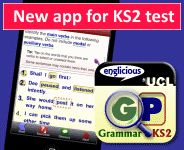Topic: Adjective phrase
These resources cover adjective phrases: phrases with an adjective as the Head word. Adjective phrases can have modifiers added before or after the Head (or both). For example, we can have happy, very happy, happy to be home, or very happy to be home. All of these are adjective phrases with happy as the Head word.
Englicious contains many resources for English language in schools, but the vast majority of them require you to register and log in first. For more information, see What is Englicious?

